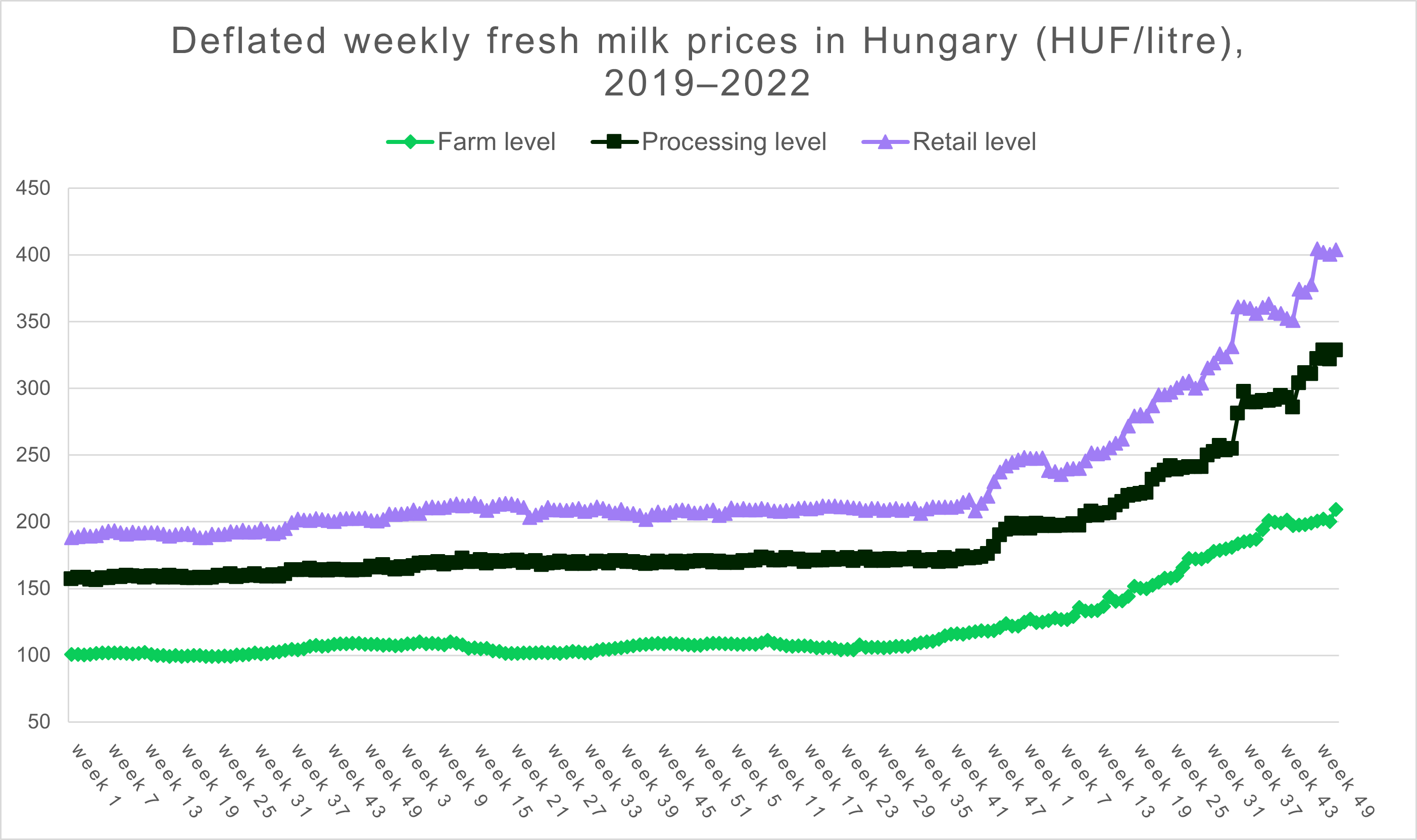Corvinus Research: COVID and Supply Chain Disruptions Strengthened Dairy Processors’ Market Advantage Over Retailers

A study published in March 2025 by Zombor Berezvai, Associate Professor at Corvinus University of Budapest, and economist Márton Kónya, finds that between 2019 and 2022, price transmission in the Hungarian dairy supply chain was asymmetric, giving a significant advantage to dairy processors. Asymmetric price transmission means that processors quickly and fully pass on increases in producer prices to consumers, whereas price decreases are transmitted only slowly and in stages.
The study outlines that in recent years, a series of crises have followed one another, beginning with the COVID-19 pandemic in 2020, which disrupted international supply chains, followed by the 2021 energy crisis, severe droughts, and the Russian war against Ukraine in 2022 onward. In Hungary, this period brought unusually high inflation—annual food price increases exceeded 40%, while dairy product inflation approached 80% by the end of 2022. According to the authors, this level of inflation is almost unprecedented, which makes it all the more important to explore how these crises affected competition across the entire supply chain, and how each actor—from producers and retailers to intermediary dairy processors—shaped the pricing dynamics.
The researchers conclude: government responses to the pandemic and various state subsidies boosted consumer demand even in the face of rising energy prices. One of the findings is that dairy processors were able to take advantage of this situation not only by passing on increased costs to consumers but also by strengthening their bargaining power over retailers. As a result, the extra profits generated by heightened demand largely landed with the processors.
According to the research, in order to curb high inflation in the dairy market, government efforts should primarily focus on the processing sector. The industry is highly concentrated: the three largest companies control nearly half of the Hungarian market, while the top five account for two-thirds. The authors conclude that reducing this market concentration and increasing competition—both among processors and between domestic and imported products—could lead to lower prices and greater food security. The researchers recommend: improving the price competitiveness of plant-based milk alternatives could also help limit the rise in dairy prices, as these products are viable substitutes for cow’s milk.